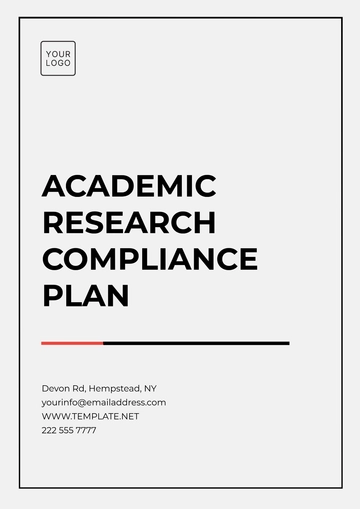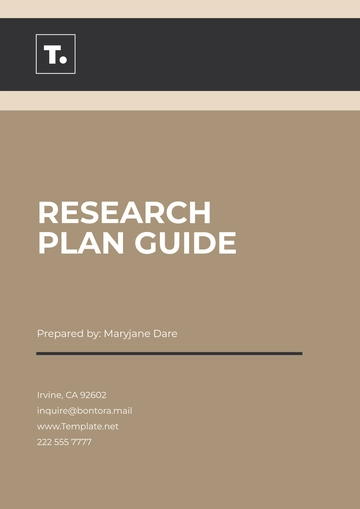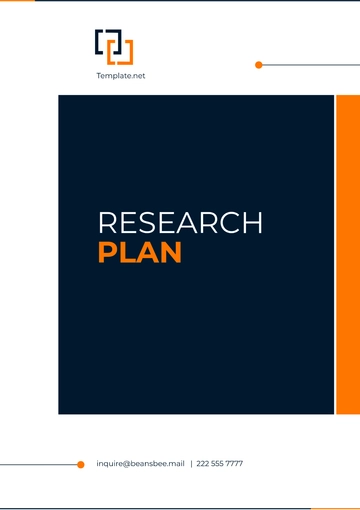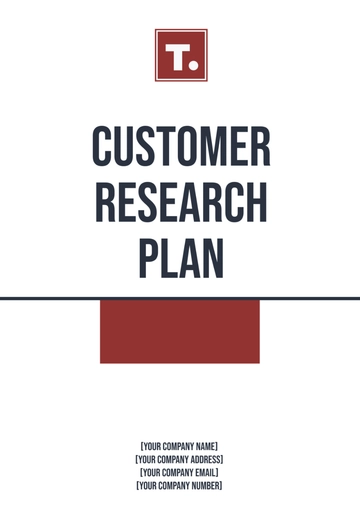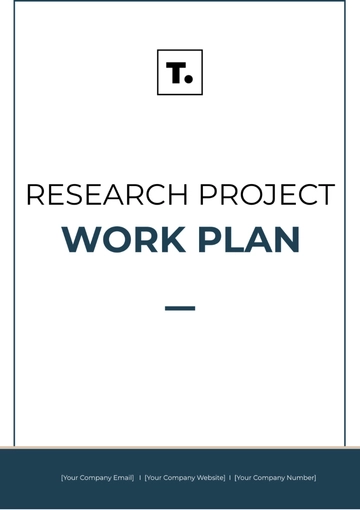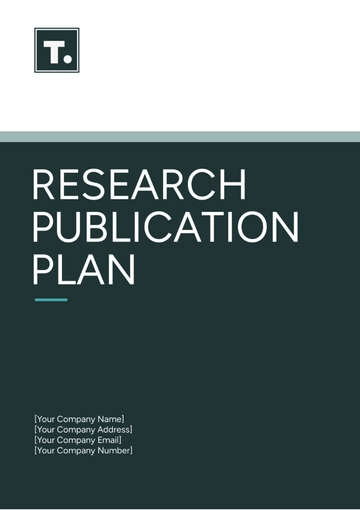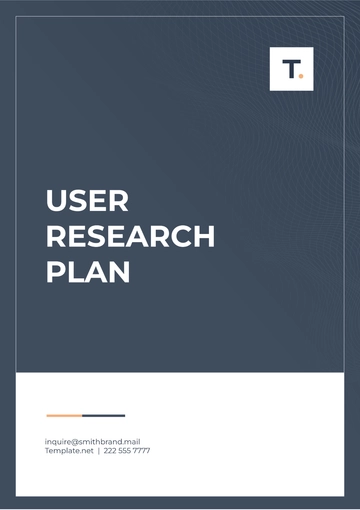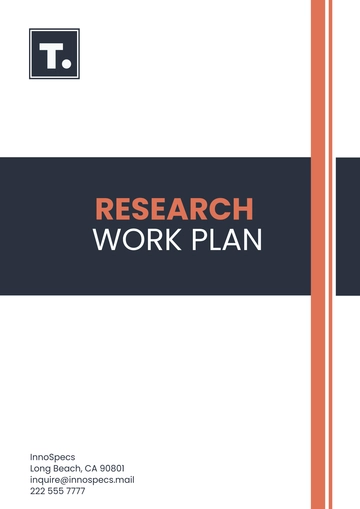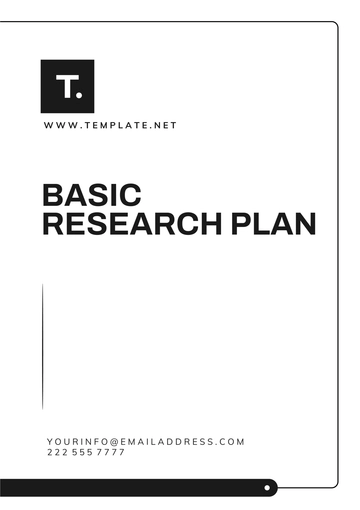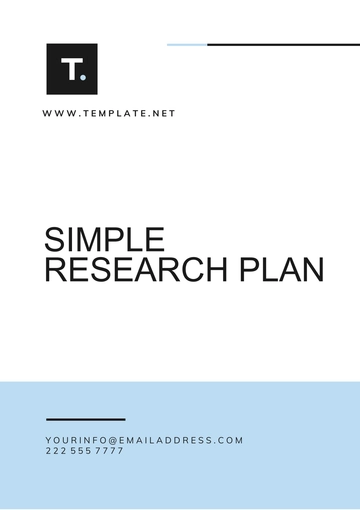Free User Research Plan

I. Introduction
In this research plan, we aim to conduct a comprehensive user research study to enhance the user experience and usability of [Your Company Name]'s digital platform. This plan outlines the objectives, methodology, participants, schedule, tasks, metrics, analysis, and recommendations for the research study.
II. Objectives
Identify pain points and usability issues within the current digital platform.
Gather insights into user behavior and preferences.
Prioritize areas for improvement based on user feedback and data analysis.
III. Methodology
A. Research Approach
Qualitative Research: Conducting in-depth interviews and usability testing sessions.
Quantitative Research: Distributing surveys to gather broader insights from a larger user base.
B. Data Collection Methods
In-depth Interviews: Conducting one-on-one interviews with existing users to delve deeper into their experiences and challenges.
Usability Testing: Observing users as they interact with the digital platform to identify usability issues and areas for improvement.
Surveys: Distributing online surveys to collect feedback and quantitative data from a broader user base.
IV. Participants
User Segment: Current users of [Your Company Name]'s digital platform.
Criteria: Users with varying levels of experience and proficiency in using the platform.
Sample Size: Approximately 20 participants for in-depth interviews and usability testing, and 200 respondents for the online survey.
V. Schedule
Duration: The research study will be conducted over a period of [Timeframe], starting from [Start Date] to [End Date].
Timeline:
Planning and Preparation: [Dates]
Participant Recruitment: [Dates]
Data Collection: [Dates]
Data Analysis: [Dates]
Report Compilation: [Dates]
VI. Tasks
Recruit participants for in-depth interviews, usability testing, and online surveys.
Develop interview guides, usability testing scenarios, and survey questionnaires.
Conduct in-depth interviews and usability testing sessions.
Distribute online surveys and collect responses.
Analyze qualitative and quantitative data.
Compile findings and insights into a comprehensive report.
VII. Metrics
Qualitative Metrics:
Number of identified usability issues.
Themes and patterns emerging from in-depth interviews.
Quantitative Metrics:
Survey response rates.
Quantitative data from survey questions.
VIII. Analysis
Qualitative Analysis: Thematic analysis of interview transcripts and usability testing observations.
Quantitative Analysis: Statistical analysis of survey data using [Your Preferred Tool or Method].
IX. Recommendations
Prioritize usability issues based on severity and impact on user experience.
Provide actionable recommendations for improving the digital platform usability.
Outline a roadmap for implementing recommended changes and improvements.
- 100% Customizable, free editor
- Access 1 Million+ Templates, photo’s & graphics
- Download or share as a template
- Click and replace photos, graphics, text, backgrounds
- Resize, crop, AI write & more
- Access advanced editor
Enhance your user insights with the User Research Plan Template from Template.net. This customizable, downloadable, and printable template provides a comprehensive framework for planning user research. With editable features in our AI Editor Tool, tailor the plan to your specific needs. Streamline your research efforts and ensure valuable findings with this invaluable resource.
You may also like
- Finance Plan
- Construction Plan
- Sales Plan
- Development Plan
- Career Plan
- Budget Plan
- HR Plan
- Education Plan
- Transition Plan
- Work Plan
- Training Plan
- Communication Plan
- Operation Plan
- Health And Safety Plan
- Strategy Plan
- Professional Development Plan
- Advertising Plan
- Risk Management Plan
- Restaurant Plan
- School Plan
- Nursing Home Patient Care Plan
- Nursing Care Plan
- Plan Event
- Startup Plan
- Social Media Plan
- Staffing Plan
- Annual Plan
- Content Plan
- Payment Plan
- Implementation Plan
- Hotel Plan
- Workout Plan
- Accounting Plan
- Campaign Plan
- Essay Plan
- 30 60 90 Day Plan
- Research Plan
- Recruitment Plan
- 90 Day Plan
- Quarterly Plan
- Emergency Plan
- 5 Year Plan
- Gym Plan
- Personal Plan
- IT and Software Plan
- Treatment Plan
- Real Estate Plan
- Law Firm Plan
- Healthcare Plan
- Improvement Plan
- Media Plan
- 5 Year Business Plan
- Learning Plan
- Marketing Campaign Plan
- Travel Agency Plan
- Cleaning Services Plan
- Interior Design Plan
- Performance Plan
- PR Plan
- Birth Plan
- Life Plan
- SEO Plan
- Disaster Recovery Plan
- Continuity Plan
- Launch Plan
- Legal Plan
- Behavior Plan
- Performance Improvement Plan
- Salon Plan
- Security Plan
- Security Management Plan
- Employee Development Plan
- Quality Plan
- Service Improvement Plan
- Growth Plan
- Incident Response Plan
- Basketball Plan
- Emergency Action Plan
- Product Launch Plan
- Spa Plan
- Employee Training Plan
- Data Analysis Plan
- Employee Action Plan
- Territory Plan
- Audit Plan
- Classroom Plan
- Activity Plan
- Parenting Plan
- Care Plan
- Project Execution Plan
- Exercise Plan
- Internship Plan
- Software Development Plan
- Continuous Improvement Plan
- Leave Plan
- 90 Day Sales Plan
- Advertising Agency Plan
- Employee Transition Plan
- Smart Action Plan
- Workplace Safety Plan
- Behavior Change Plan
- Contingency Plan
- Continuity of Operations Plan
- Health Plan
- Quality Control Plan
- Self Plan
- Sports Development Plan
- Change Management Plan
- Ecommerce Plan
- Personal Financial Plan
- Process Improvement Plan
- 30-60-90 Day Sales Plan
- Crisis Management Plan
- Engagement Plan
- Execution Plan
- Pandemic Plan
- Quality Assurance Plan
- Service Continuity Plan
- Agile Project Plan
- Fundraising Plan
- Job Transition Plan
- Asset Maintenance Plan
- Maintenance Plan
- Software Test Plan
- Staff Training and Development Plan
- 3 Year Plan
- Brand Activation Plan
- Release Plan
- Resource Plan
- Risk Mitigation Plan
- Teacher Plan
- 30 60 90 Day Plan for New Manager
- Food Safety Plan
- Food Truck Plan
- Hiring Plan
- Quality Management Plan
- Wellness Plan
- Behavior Intervention Plan
- Bonus Plan
- Investment Plan
- Maternity Leave Plan
- Pandemic Response Plan
- Succession Planning
- Coaching Plan
- Configuration Management Plan
- Remote Work Plan
- Self Care Plan
- Teaching Plan
- 100-Day Plan
- HACCP Plan
- Student Plan
- Sustainability Plan
- 30 60 90 Day Plan for Interview
- Access Plan
- Site Specific Safety Plan
